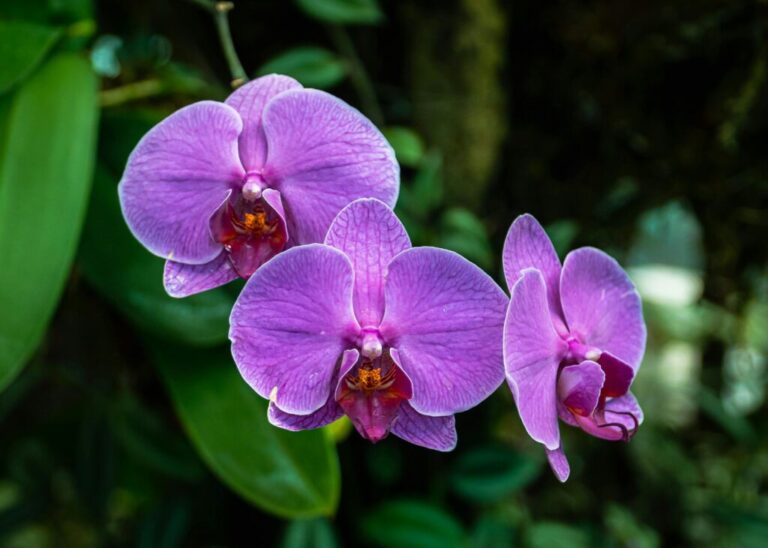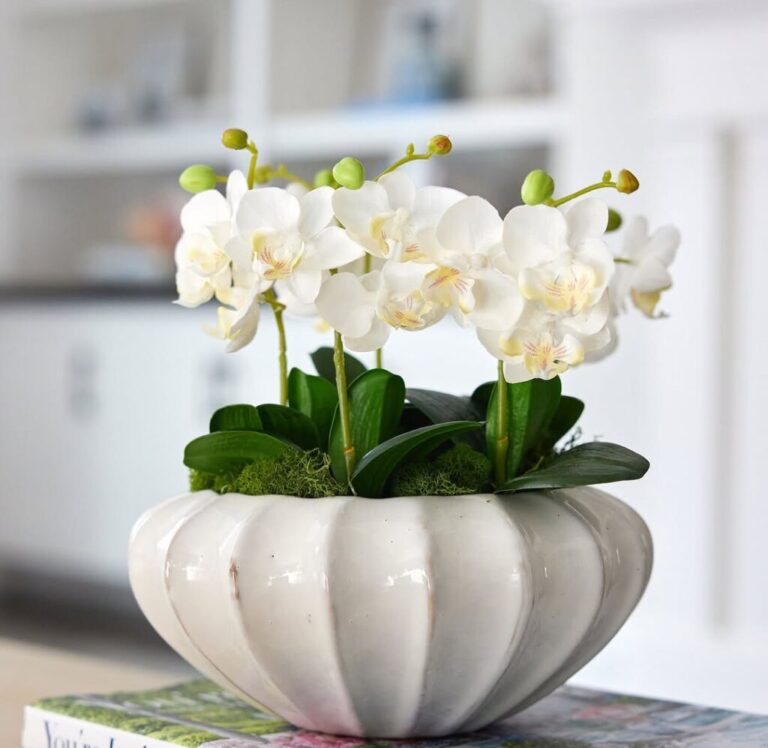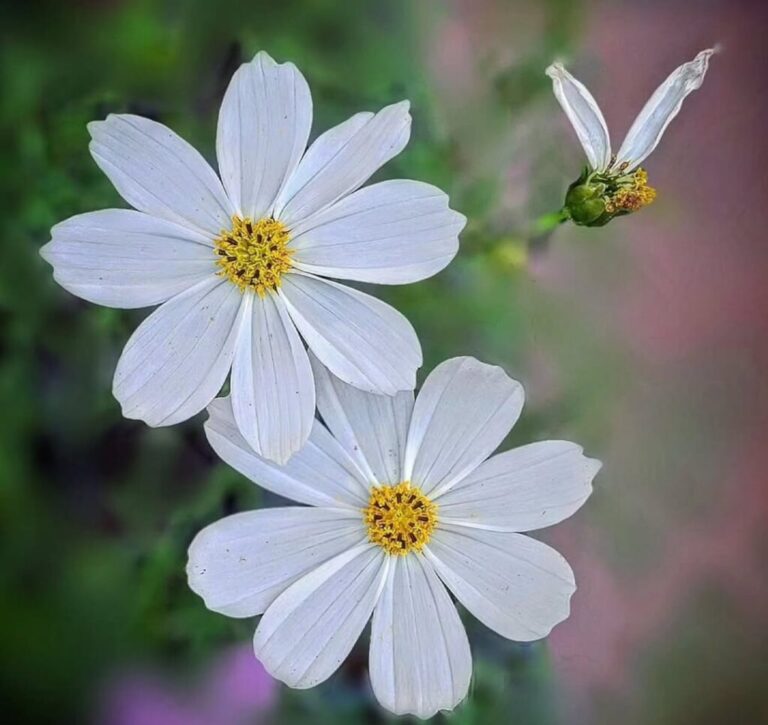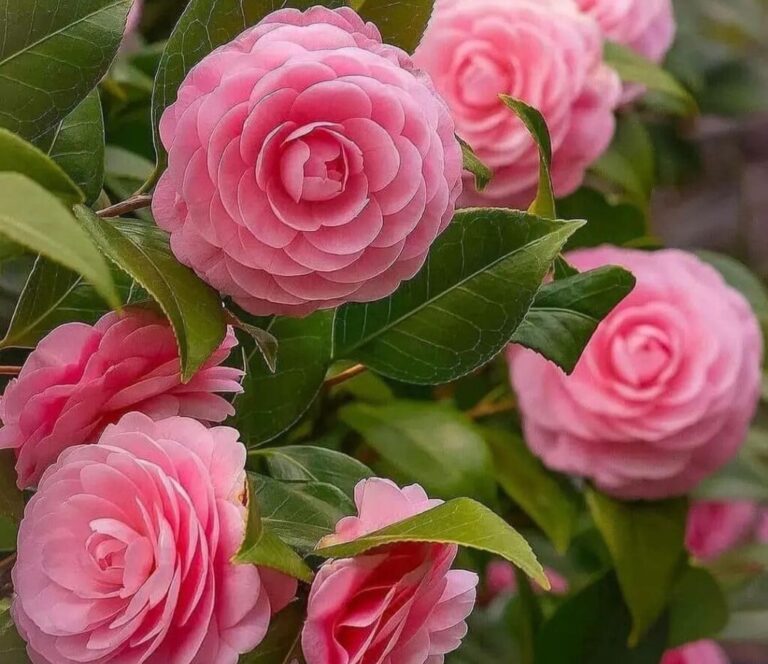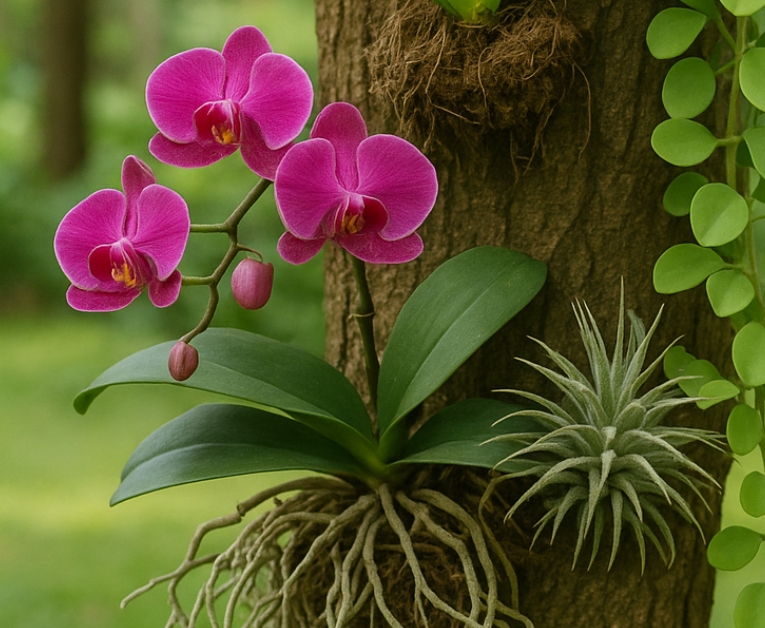Welcome to the captivating world of orchid growing! Orchids, with their exquisite blooms and alluring charm, have long captivated the hearts of gardeners. However, for those new to cultivating these delicate beauties, there can be a learning curve filled with common mistakes. In this guide, we will unravel the 14 most prevalent orchid growing mistakes made by beginners and provide practical solutions to help you navigate these challenges successfully.
From finding the perfect balance of watering to understanding their unique lighting requirements, we will equip you with the knowledge to ensure your orchids thrive and grace your space with their magnificent presence. So, let’s dive in and unravel the secrets of orchid cultivation, empowering you to avoid these pitfalls and embark on a rewarding journey of nurturing these extraordinary plants.

- 1 Solutions
- 2 Underwatering and solutions
- 3 Exposing orchid plants to excessive sunlight
- 4 Solutions
- 5 Bud blast:
- 6 Fungal or bacterial infections:
- 7 Skipping Rest Periods
- 8 Why rest periods are essential:
- 9 How to Provide Adequate Rest:
- 10 Impatience in Waiting for Blooms
- 11 Why patience is key:
- 12 Consequences of Impatience:
- 13 Throwing orchids in the trash. Give it back to someone.
- 14 FAQ
Orchid Growing Mistakes New Gardeners Make + Solutions
To avoid the overwatering mistake, follow these best practises:
Overwatering is a prevalent and potentially detrimental mistake frequently made by new gardeners when it comes to orchid care.
Unlike traditional houseplants, orchids cannot thrive in regular garden soil and have distinct watering requirements. Novices often approach orchid care with excessive enthusiasm, mistakenly believing that more water equates to better growth.
However, this approach can lead to detrimental consequences such as root rot and fungal infections. Despite being tropical plants, orchids should not be watered as frequently as other houseplants. It is crucial to strike a delicate balance and provide just the right amount of water to avoid compromising their health and vitality.
Solutions
Watering frequency: Instead of watering orchids daily, only water when the potting medium feels dry. Insert your finger about an inch into the medium to assess its moisture level before watering.
Optimal watering time: It is best to water orchids in the early morning. This allows any excess moisture on the foliage or blooms to dry out during the day, reducing the risk of fungal or bacterial issues.
Sink method: Place your orchid container in a sink and run tepid water over the moss or growing medium to keep it moist. Be careful not to let the running water damage the foliage or flowers.
Bowl method: Alternatively, you can place the orchid pot in a bowl filled with water. This allows the orchid mix to absorb the water from the bottom, ensuring thorough hydration. Remove the pot from the bowl once the top layer of the medium feels moist.
Watering can: Another effective method is using a watering can to pour water directly onto the potting medium. This gives you better control over the amount of water applied and helps prevent overwatering.
Consider climate and indoor conditions: The frequency of watering can vary depending on the climate and environment. In general, aim to water your orchid once a week when growing it indoors. Adjust the frequency based on factors such as temperature, humidity, and the specific needs of your orchid species.
Underwatering and solutions
Underwatering is a common mistake made by many gardeners when it comes to orchid care. Orchids, though resilient, still require regular watering to thrive. Here are some solutions to prevent underwatering:
Underwatering is a common mistake in orchid care. To avoid this, follow these solutions:
Monitor moisture: Check the potting medium regularly by inserting your finger about an inch into the mix. Water when it feels dry.
Thorough watering: Ensure the potting medium is thoroughly saturated, with water draining out of the bottom of the pot.
Establish a watering schedule: Consider the needs of your orchid species and adjust the watering frequency accordingly.
Consider environmental factors: Factors like temperature and humidity affect water requirements. Adjust watering during hot and dry periods.
Use suitable water: If tap water contains chemicals or minerals, opt for filtered, distilled, or rainwater.
Observe plant condition: Wrinkled leaves or shriveled pseudobulbs indicate dehydration. Adjust watering accordingly.
Remember to research the specific needs of your orchid species. Providing consistent moisture will help your orchids thrive.
Exposing orchid plants to excessive sunlight
Exposing orchid plants to excessive sunlight is a common mistake made by beginner gardeners. Orchids thrive under indirect sunlight, so it’s important to avoid placing them in areas with intense, direct sunlight.
Solutions:
If you notice that the leaves of your orchid are showing signs of damage or decreased health, relocate the plant to a north or west-facing window. These orientations provide a more balanced level of sunlight.
Yellow spots and yellowing leaves are indicators that your orchid is receiving too much light. In such cases, it is crucial to move the plant to a location where it will receive minimal exposure to sunlight or other sources of light.
By being mindful of the lighting conditions and making necessary adjustments, you can ensure that your orchids receive the optimal amount of light, promoting their overall health and vitality.
Humidity problem
Promoting adequate humidity is crucial when growing orchid plants, but it’s a mistake to assume that all orchids have the same humidity requirements, regardless of location.
For example, if you reside in a cooler climate, avoid placing your orchid near windows where it may be exposed to cold draughts.
Solutions:
If you are in an area with low humidity, take measures to provide artificial humidity for your orchids. You can mist them periodically or place a humidity tray beneath their pots, maintaining humidity levels between 55% and 75%.
In dry regions or climates, consider using a dehumidifier or increasing the heat during the winter season to prevent excessive drying of the orchids.
Ensure that orchids are kept away from cold temperatures and avoid subjecting them to sudden temperature fluctuations, whether high or low.
By addressing humidity concerns and protecting orchids from extreme temperature conditions, you can create a favourable environment for their growth and ensure their well-being. Remember to adapt your care practises to the specific requirements of your orchid species and the climate in which you are growing them.
Growing orchids in inappropriate potting materials
Growing orchids in inappropriate potting materials is a common mistake made by many beginner gardeners. Using regular soil for orchids can be detrimental and may result in the death of the plant. It’s essential to understand that orchids have specific growing requirements that differ from those of traditional houseplants.
To rectify this issue, follow these solutions:
Select the appropriate potting mix for your orchids. The ideal mediums include tree bark, cork, or coconut shreds, as they promote adequate airflow around the roots and allow for quick drainage.
Consider alternative materials to replace traditional potting mix. Bark chips, sphagnum moss, coconut husks, and even Styrofoam can be used as suitable alternatives, providing the necessary conditions for orchid growth.
By using the correct potting materials, you can create a favourable environment for your orchids, mimicking their natural habitat and allowing them to thrive. Remember to research the specific needs of your orchid species to ensure you choose the most suitable potting mix.
Adding excessive amounts of nutrients
Adding excessive amounts of nutrients to orchids is a common mistake made by novice gardeners who believe it will result in more blooms and faster growth. However, overfertilizing can actually harm the orchids, especially their delicate roots.
To address this issue, consider the following solutions:
Limit fertilisation to once or twice a month, using a half or one-quarter strength of the recommended dose. This means using only half of the amount specified on the fertiliser packet.
Opt for fertilisers that contain the appropriate balance of nitrogen, phosphorus, and potassium, along with essential micronutrients. Look for formulations like 10-10-10 or 20-20-20.
Feed your orchids during the growing season. If you live in a colder region, avoid fertilising during the winter and wait until spring, when you notice active growth symptoms.
Use a half-strength 10-10-10 fertiliser and a one-quarter-strength 20-20-20 fertiliser for feeding your orchids
, you can provide your orchids with the right amount of nutrients without overwhelming their delicate root systems. Remember to adjust your fertilisation routine based on the specific needs of your orchid species and the environmental conditions in which they are growing.
Selecting the wrong type of orchid
Selecting the wrong type of orchid is a common mistake made by novice gardeners who overlook the specific environmental conditions required by each orchid species.
To avoid this mistake, it is essential to choose an orchid type that is well-suited to your living environment. With a wide variety of orchid species available, it becomes easier to select the one that aligns with your specific needs and growing conditions.
Here are some solutions to consider:
Avoid using excessive amounts of ice-cold water, as it can cause root damage. If you choose to use ice cubes, ensure there is plenty of potting mix between the ice cubes and the roots to prevent direct contact
Pay attention to the growth indicators of your orchid. Aerial roots, false or pseudobulbs, and canes are signs of healthy growth. Aerial roots play a crucial role in nutrient absorption, while canes support the development of new growth. Pseudobulbs store energy and contribute to consistent flowering and overall orchid growth.
selecting the right type of orchid and understanding its specific growth requirements, you can provide the optimal environment for your orchids to thrive. Remember to research the individual needs of your chosen orchid species to ensure their long-term health and successful cultivation.
Mistakes to Avoid: Misting Flowers and Transplanting Orchids During Bloom
Misting the flowers of orchids and transplanting them while they are blooming is a common mistake made by novice gardeners, which can have negative consequences for the health of the orchid.
While orchids thrive in humid conditions, it is important to avoid misting the flowers directly, as it can be detrimental, leading to premature death and wilting of the blooms.
Solutions
Instead of misting the flowers, you can mist the foliage or create a humid environment by placing the orchid pot on a pebble tray filled with water. This allows for indirect humidity without directly affecting the delicate blooms.
If a pebble tray is not feasible, using a humidifier in the vicinity of the orchid can help maintain the desired humidity levels.
Additionally, it is crucial to avoid transplanting orchids while they are in the blooming phase. During this time, the plant has allocated most of its energy towards flowering, and disturbing the roots through transplantation can result in untimely death and hinder overall growth.
By refraining from misting the flowers, providing appropriate humidity through alternative methods, and avoiding transplanting during the blooming period, you can ensure the well-being and longevity of your orchids. Remember to consider the specific needs of your orchid species and adjust care practises accordingly.
Common Orchid Growing issue and Solutions
Here are some common orchid growing issues and their solutions:
Yellowing leaves:
Issue: Yellowing leaves can indicate various problems such as overwatering, underwatering, nutrient deficiencies, or root issues.
.Solution: Check the watering practices and adjust accordingly. Ensure the orchid is receiving adequate water without being soaked. Check the roots for any decay or damage indications. Evaluate the orchid’s nutrient levels and provide appropriate fertilization. Adjust lighting conditions if necessary.
Lack of blooming:
Issue: Orchids may fail to produce flowers due to insufficient light, improper temperature, inadequate nutrients, or inappropriate dormancy periods (for certain orchid types).
Solution: Assess the lighting conditions and ensure the orchid is receiving sufficient indirect light. Maintain appropriate temperatures as per the orchid’s requirements. Review the fertilization routine and provide a balanced orchid fertilizer. Research and follow the specific dormancy requirements if applicable.
Bud blast:
Issue: Bud blast occurs when buds drop off before opening, typically caused by sudden environmental changes, temperature extremes, inadequate humidity, or ethylene exposure.
Solution: Maintain a consistent and stable environment for your orchids, avoiding drastic temperature fluctuations or exposure to ethylene-producing sources like ripening fruits. Ensure adequate humidity levels and protect the orchids from dry drafts or overly dry conditions.
Fungal or bacterial infections:
Issue: Orchids can be susceptible to various infections, resulting in leaf spots, rot, or wilting.
Solution: Improve air circulation around the orchids to reduce humidity and prevent the growth of fungi or bacteria. Remove affected plant parts and apply appropriate fungicides or bactericides following the product instructions. Ensure proper watering practices and avoid wetting the leaves excessively.
Skipping Rest Periods
Skipping rest periods is a common mistake that orchid enthusiasts may make when caring for these delicate plants. Many orchid species require rest periods to mimic their natural growth cycles and promote healthy blooming. Neglecting these rest periods can impact the overall well-being of the orchid.
Rest periods are crucial for orchids as they allow the plant to rejuvenate, store energy, and prepare for the next phase of growth, typically flowering. Some orchids, such as those belonging to the Cymbidium genus, have a distinct dormancy period where they benefit from cooler temperatures and reduced watering.
Why rest periods are essential:
Energy Conservation: During rest periods, orchids conserve energy, redirecting resources to vital processes like root development and nutrient absorption.
Mimicking Natural Conditions: Orchids often experience changes in their natural environment, including temperature variations and seasonal shifts. Providing rest periods helps replicate these conditions.
Flower Induction: Certain orchids require a rest period to initiate the flowering process. This is a critical phase for the development of buds and the eventual display of vibrant blooms.
Consequences of Skipping Rest Periods:
Reduced Blooming: Without proper rest, orchids may struggle to produce flowers or exhibit limited blooming.
Stunted Growth: Continuous growth without rest can lead to weakened plants with stunted growth, affecting their overall vigour.
Susceptibility to Diseases: Orchids deprived of rest periods may become more susceptible to diseases and pests due to weakened immune responses.
How to Provide Adequate Rest:
Temperature Adjustment: For orchids that require cooler temperatures during rest, move them to a slightly cooler environment for the designated period.
Reduced Watering: Adjust the watering frequency during the rest period, allowing the orchid’s potting mix to dry out more between waterings.
Light Considerations: While some orchids benefit from reduced light during rest, others may still require adequate light to maintain their health. Examine the unique requirements of your species of orchid.
In conclusion, recognising and respecting the rest periods of your orchids is crucial for their long-term health and successful blooming. Before bringing an orchid into your care, familiarise yourself with its specific requirements to ensure you provide the optimal conditions for its growth and well-being. Remember, a well-rested orchid is more likely to reward you with stunning displays of flowers when the blooming season arrives.
Impatience in Waiting for Blooms
Impatience in waiting for blooms is a common pitfall for many orchid enthusiasts, especially those new to orchid growing. Orchids, known for their exquisite beauty, can take time to acclimatise to their environment and initiate the blooming process. It’s important for growers to understand the natural growth cycle of orchids and practice patience throughout the waiting period.
Why patience is key:
Adjustment Period: Orchids often experience an adjustment period after being introduced to a new environment. This phase allows them to acclimatise to factors like light, humidity, and temperature.
Development of Flower Buds: Orchids typically form flower buds during specific stages of their growth cycle. Rushing this process may lead to premature blooming or hinder the overall development of healthy buds.
Varied Blooming Times: Different orchid species have varied blooming times, and factors such as age, health, and environmental conditions play significant roles in determining when an orchid will produce flowers.
Consequences of Impatience:
Stress on the Orchid: Constantly moving or fussing with an orchid in anticipation of blooms can stress the plant, affecting its overall health.
Disrupting Growth Cycles: Impatience may lead to disruptions in the orchid’s natural growth cycles, potentially delaying or hindering future blooming.
Overwatering or overfeeding: Some growers may mistakenly believe that providing more water or fertiliser will expedite blooming. However, this can lead to overwatering or nutrient imbalances, negatively impacting the orchid.
Tips for cultivating but have patience:
Research Blooming Patterns: Familiarise yourself with the specific blooming patterns of your orchid species. Understanding when to expect blooms can help manage expectations.
Provide Consistent Care: Maintain a consistent care routine, including proper watering, fertilisation, and light conditions. A stable environment encourages healthy blooming.
Observe Signs of Growth: Instead of focusing solely on blooms, pay attention to other signs of growth, such as new shoots, healthy leaves, and root development. These indicators suggest the orchid is thriving.
Enjoy the Journey: Orchid growing is a journey, and each phase, from the emergence of new leaves to the eventual blooming, contributes to the overall beauty of the plant. Take pleasure in every stage.
By practicing patience and understanding the natural rhythms of your orchid, you’ll create an environment that fosters optimal growth and, eventually, a breathtaking display of blooms. Remember, the reward for your patience is the stunning and unique blossoms that each orchid variety brings.
Throwing orchids in the trash. Give it back to someone.
Throwing orchids in the trash is a waste, and there are more sustainable and considerate alternatives. If you no longer want your orchids or are unable to care for them, consider giving them to someone who can appreciate and care for these beautiful plants. You could offer them to friends, family, or colleagues who have an interest in gardening, or you could simply donate them to a local community garden, plant exchange, or horticultural group. This way, you contribute to the wellbeing of the plants and share the joy of orchid growing with others.
Inadequate root growth:
Issue: Orchids with poor root growth may have root rot, insufficient nutrients, or inappropriate growing medium.
Solution: Check the roots for signs of rot and address the underlying cause, adjusting watering practices or repotting if necessary. Evaluate the growing medium and ensure it provides proper drainage and aeration. Consider using orchid-specific potting mixes or materials like bark, sphagnum moss, or perlite.
FAQ
Why aren’t my orchids blooming?
Common Mistake: Insufficient light or improper watering.
Solution: Ensure your orchids receive adequate indirect light, and follow a proper watering schedule based on their specific needs.
Why are my orchid leaves turning yellow?
Common Mistake: Overwatering or underwatering.
Solution: Adjust your watering routine to maintain a balance, allowing the orchid’s roots to dry slightly between watering sessions.
What causes root rot in orchids?
Common Mistake: Excessive watering and poor drainage.
Solution: Use a well-draining orchid mix, repot if necessary, and be cautious not to let water accumulate at the base of the orchid.
How can I prevent pests on my orchids?
Common Mistake: Neglecting regular inspections and not providing proper airflow.
Solution: Check your orchids regularly for signs of pests, enhance ventilation around plants, and consider natural pest control methods like neem oil.
What are the most common orchid growing mistakes beginners make?
One of the most frequent orchid growing mistakes beginners make is overwatering. Orchids require well-drained soil and can easily suffer from root rot if water accumulates. Placing them in a poorly lit area or ignoring humidity needs are also common orchid growing mistakes that hinder healthy growth.
2. Why is overwatering considered one of the top orchid growing mistakes?
Overwatering tops the list of orchid growing mistakes because it deprives the roots of oxygen, leading to rot. Between waterings, orchids love to become a little dry.Monitoring moisture levels and using breathable pots can help prevent one of the most damaging orchid growing mistakes.
3. How can improper lighting lead to orchid growing mistakes?
Insufficient or excessive light is among the overlooked orchid growing mistakes. Orchids need bright, indirect sunlight. Too little light prevents blooming, while too much causes leaf burn. Placing orchids near east or south-facing windows can avoid lighting-related orchid growing mistakes.
4. Are wrong potting materials considered orchid growing mistakes?
Yes, using the wrong potting materials is one of the key orchid growing mistakes. Standard soil retains too much moisture and suffocates roots. A proper orchid mix with bark or sphagnum moss ensures airflow and drainage, preventing one of the critical orchid growing mistakes.
5. Can temperature fluctuations be part of orchid growing mistakes?
Yes, inconsistent temperatures are serious orchid growing mistakes. Orchids thrive in stable conditions. Sudden drops or extreme heat can stress the plant and inhibit blooming. Avoid placing orchids near vents or drafty windows to steer clear of temperature-related orchid growing mistakes.
6. Why is fertilizing improperly one of the orchid growing mistakes?
One common error in orchid gardening is using too much or too little fertiliser. When they are actively growing, orchids require a diluted, balanced fertiliser. While too little fertiliser damages the plant, too much fertiliser burns the roots. Avoiding these typical orchid growing errors is possible with consistent, light feeding.
7. Are pests and diseases linked to orchid growing mistakes?
Yes, neglecting pest control and sanitation are major orchid growing mistakes. Mites, aphids, and fungal infections spread rapidly if not managed. Isolating infected plants and cleaning tools are essential practices to prevent pest-related orchid growing mistakes.
8. Is repotting at the wrong time one of the orchid growing mistakes?
Absolutely. Repotting during blooming or too frequently ranks high among orchid growing mistakes. When roots overflow the pot, or every 1-2 years, orchids should be repotted. Disturbing them too often causes stress, making this one of the avoidable orchid growing mistakes.
9. How do watering techniques affect orchid growing mistakes?
Poor watering methods—like soaking leaves or watering at night—are common orchid growing mistakes. Rot and disease can be avoided by watering early in the day and keeping moisture off the leaves. Learning correct techniques helps reduce these frequent orchid growing mistakes.
10. Can poor air circulation contribute to orchid growing mistakes?
Yes, lack of airflow is one of the silent orchid growing mistakes. Orchids require ventilation to prevent mold and root problems. Placing a fan nearby or spacing plants properly ensures good air circulation, helping eliminate one of the common orchid growing mistakes.


